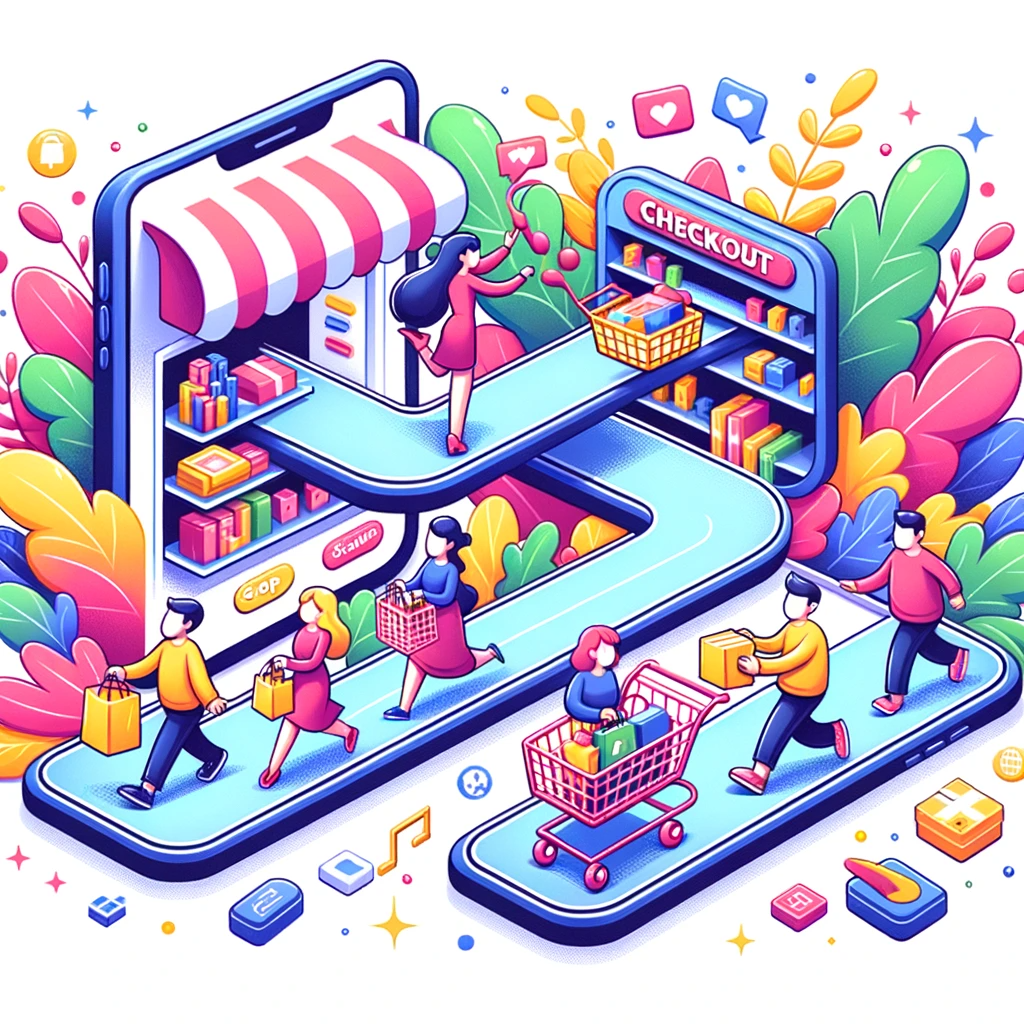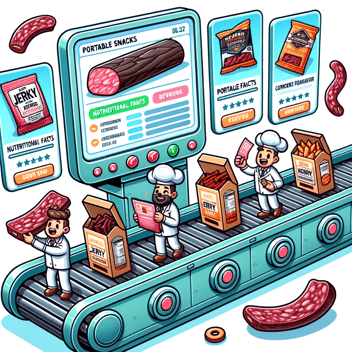
From Browsing to Buying: Enhancing E-commerce User Experiences
This post may contain affiliate links, which means I may receive a commission if you click a link and purchase something that I have recommended. Thank you!
In the realm of online shopping, the user experience (UX) is pivotal. A satisfying UX fosters customer loyalty, whilst a poor one can drive visitors away. As the digital realm burgeons, comprehending the user journey from browsing to buying is imperative for e-commerce success. This article delves into strategies for enriching the e-commerce user journey, ensuring customers not only find what they need but enjoy the process.
Understanding the E-commerce User Journey
The online shopping process is a journey that commences the moment a visitor lands on your site and concludes once a purchase is made. It's essential to appreciate each phase of this journey to create a smooth transition from browsing to buying. The process generally encompasses the following stages:
- Discovery: Customers land on your site.
- Research: They peruse your products.
- Decision: They decide what to buy.
- Purchase: They complete the transaction.
A seamless transition between these stages can significantly boost conversions and customer satisfaction.
Website Optimization for Enhanced User Experience
Optimizing your website is crucial for a stellar user experience. Here are some key areas to focus on:
Speed Optimization
A sluggish website is a surefire way to deter potential customers. Here are some tactics to reduce load times:
- Image Optimization: Use compressed images with the correct dimensions.
- Minimize HTTP Requests: Reduce the number of requests to your server by minimizing the number of elements on your pages.
- Use Browser Caching: Store cached versions of your site to reduce load time for returning visitors.
Mobile Responsiveness
With a surge in mobile shopping, ensuring your site is mobile-friendly is crucial. A responsive design ensures your website is accessible and user-friendly, irrespective of the device used. According to FreshSparks, a responsive design is paramount for a consistent e-commerce experience across all devices1.
Design Elements that Elevate User Experience
A well-designed website not only looks good but makes navigation a breeze.
Easy Navigation
- Clear Menus: Ensure your menu is easy to find and navigate.
- Search Functionality: Include a search bar to help users find what they're looking for swiftly.
Appealing Visuals
- High-Quality Images: Use high-resolution images to make your products shine.
- Consistent Styling: Maintain a cohesive style to foster brand recognition.
Building Trust through Transparency
Transparency is the cornerstone of trust in the e-commerce realm.
- Clear Pricing: Display all costs upfront to prevent any unpleasant surprises at checkout.
- Shipping Information: Provide clear, easy-to-find shipping information.
- Return Policies: Ensure your return policy is easy to find and understand.
Call to Action (CTA) Placement and Design
Effective CTAs guide users through the buying process, nudging them closer to conversion.
- Strategic Placement: Place CTAs at strategic points in the user journey to encourage action without being obtrusive.
- Clear Messaging: Ensure your CTAs are clear, compelling, and easy to find.
A meticulous approach to design, transparency, and website optimization forms the bedrock of an excellent e-commerce UX. Stay tuned for advanced strategies in part two of this article, where we'll delve deeper into advanced e-commerce features, personalized shopping experiences, and engagement strategies. Meanwhile, explore how improving e-commerce conversions can significantly boost your online sales.
Advanced Strategies for Boosting E-commerce Engagements
In the ever-competitive e-commerce landscape, going the extra mile to captivate and retain customers is a necessity. Advanced features and personalized engagements are your allies in this endeavor. In this segment, we delve into these sophisticated strategies aimed at elevating the e-commerce user experience from standard to exceptional.
Implementing Advanced E-commerce Features
Incorporating advanced features on your e-commerce platform not only enhances user experience but also gives you a competitive edge.
Product Filters and Search Functionality
- Robust Search Engine: Implement a robust search engine to help users find exactly what they are looking for.
- Filtering Options: Provide ample filtering options to help users narrow down their choices based on preferences.
Wishlist and Comparison Features
- Wishlist Creation: Allow users to create wishlists, which can be revisited later.
- Product Comparison: Offer a product comparison feature to aid customers in making informed decisions.
Creating a Personalized Shopping Experience
Personalization is the linchpin of a modern e-commerce user experience. By leveraging user data, you can provide a customized shopping experience that boosts conversions.
Personalized Recommendations and Offers
- Recommendation Algorithms: Utilize algorithms to suggest products based on past purchases or browsing history.
- Targeted Offers: Send targeted offers and discounts based on user preferences and shopping behavior.
Engaging Returning Users
- Personalized Greetings: Welcome returning users with personalized greetings.
- Loyalty Programs: Implement loyalty programs to reward repeat customers and encourage continuous engagement.
Engagement through Content and Community
Engaging content and a vibrant community can significantly augment the e-commerce user experience.
Engaging Product Descriptions
- Storytelling: Incorporate storytelling in product descriptions to create an emotional connection with customers.
- Informative Content: Provide all necessary information in product descriptions to aid in the decision-making process.
Building a Community
- Social Media Integration: Integrate social media to foster a community around your brand.
- User-Generated Content: Encourage user-generated content to build trust and engagement.
Abandoned Cart Strategies
Cart abandonment is a pervasive issue in e-commerce. However, with the right strategies, you can re-engage customers and bolster conversions.
Abandoned Cart Email Automation
- Timely Reminders: Send timely reminders to customers about items left in their carts.
- Incentives to Complete Purchase: Offer discounts or other incentives to encourage completion of the purchase. This strategy can be further enhanced by implementing abandoned cart email automation to reel those hesitant buyers back in1.
Utilizing Customer Feedback for Continuous Improvement
Continuous improvement is a hallmark of a thriving e-commerce platform.
Gathering User Feedback
- Surveys and User Testing: Conduct surveys and user testing to garner feedback on the user experience.
- Feedback Forms: Provide easy-to-access feedback forms on your website.
Implementing Changes Based on Feedback
- Continuous Optimization: Use the feedback received to make necessary adjustments to your e-commerce platform.
- Informing Users: Inform users about the changes made based on their feedback to show that you value their input.
FAQs
1. How can I improve the load time of my e-commerce website?
- Image Optimization: Utilize compressed images with appropriate dimensions.
- Browser Caching: Enable browser caching to reduce load time for returning visitors.
- Reduce HTTP Requests: Minimize the number of elements on your pages to reduce server requests.
2. What are some of the essential design elements for an e-commerce website?
- Clear Navigation: Ensure your menu is intuitive and easy to navigate.
- Responsive Design: Opt for a responsive design to provide a seamless user experience across various devices.
3. How can personalized shopping experiences benefit my e-commerce business?
- Increased Conversions: Personalized recommendations and offers can lead to higher conversion rates.
- Enhanced Customer Loyalty: Personalization fosters a connection between your brand and customers, encouraging repeat purchases.
4. What strategies can help in reducing the cart abandonment rate?
- Abandoned Cart Emails: Send reminder emails to customers about items left in their carts.
- Special Offers: Provide incentives such as discounts or free shipping to encourage completion of the purchase.
Creating a stellar e-commerce user experience necessitates a blend of basic optimizations, advanced features, and continuous feedback-driven improvements. Incorporating these strategies can significantly enhance the user journey from browsing to buying, fostering a loyal customer base and propelling your e-commerce business to new heights.


